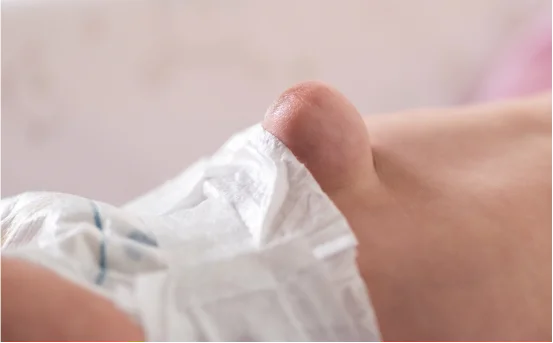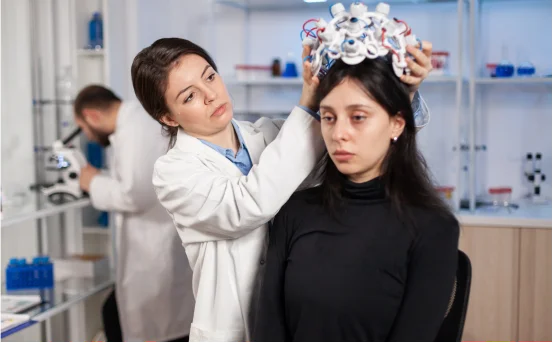Symptoms of pediatric hernia repair surgery are more common than most parents realize. While the idea of a child needing surgery can be daunting, hernia repair is a routine and generally safe procedure when performed by experienced pediatric surgeons. Understanding the symptoms of pediatric hernia, the types that exist, and when hernia repair surgery is needed can help ease concerns and ensure timely medical attention.
Pediatric hernias can vary in severity and type, but the most common forms include inguinal hernias (in the groin) and umbilical hernias (near the belly button). Some hernias may be harmless and resolve naturally over time, while others may lead to complications and require surgical intervention. The key to effective treatment lies in recognizing the early symptoms and understanding when to seek medical care.
What Is a Pediatric Hernia?
A pediatric hernia occurs when an internal organ or tissue bulges through a weak spot in the muscle or connective tissue. Unlike adult hernias, pediatric hernias are often congenital, meaning the child was born with the defect.
While some hernias may go unnoticed or resolve on their own, others require surgical repair to prevent complications like strangulation, obstruction, or infection.
Common Types of Hernias in Children
- Inguinal Hernia
-
Most common type in children, especially boys.
-
Occurs when a part of the intestine pushes through the inguinal canal in the groin.
- Umbilical Hernia
-
Appears as a soft bulge near the belly button.
-
Often seen in newborns and usually resolves by age 2–4.
- Epigastric Hernia
-
Occurs in the upper abdomen, between the belly button and chest.
-
Less common, often requires surgery if symptoms persist.
- Incisional Hernia
-
Develops at the site of a previous surgical incision.
-
Seen more often in children who have undergone abdominal surgery.
Symptoms of Pediatric Hernia Repair Surgery
Recognizing the symptoms of a pediatric hernia early is crucial for timely treatment. The symptoms vary depending on the type and severity of the hernia.
Common Symptoms Include :-
Visible Bulge
-
Most hernias present as a noticeable bulge in the groin, belly button, or abdomen.
-
The bulge may become more prominent during crying, coughing, or straining.
Swelling in the Groin or Abdomen
-
Especially with inguinal hernias, swelling may appear in the scrotum or groin area.
-
The swelling may disappear when the child is lying down.
Pain or Discomfort
-
Older children may complain of a dull ache or pressure at the site.
-
Infants may become irritable or fussy, especially if the hernia becomes incarcerated.
Nausea or Vomiting
-
These symptoms could suggest a more serious condition like a strangulated hernia, which needs emergency attention.
Redness and Tenderness
-
If the hernia is red, warm, or painful to touch, seek immediate medical help.
Feeding Difficulties in Infants
-
Babies may refuse to eat or show signs of discomfort after feeding if a hernia is causing internal pressure.
When Is Pediatric Hernia Surgery Necessary?
Not all hernias require immediate surgery. However, most inguinal hernias do not heal on their own and usually need surgical repair. The decision to operate depends on :-
Type of Hernia
-
Umbilical hernias often resolve by themselves but may need surgery if they persist beyond age 4 or are larger than 2 cm.
-
Inguinal, epigastric, and incisional hernias typically require surgery.
Severity of Symptoms
-
Pain, vomiting, and inability to push the hernia back in (non-reducible hernia) indicate a need for prompt surgical correction.
Risk of Complications
-
If a hernia becomes incarcerated (trapped) or strangulated (cutting off blood supply), emergency surgery is required.
What Happens During Pediatric Hernia Repair Surgery?
- Pre-Surgery Preparation
-
Your child may need to fast for several hours before surgery.
-
Blood tests and a physical exam may be done to confirm fitness for anesthesia.
- Anesthesia
-
Pediatric hernia repair is performed under general anesthesia.
- Surgical Procedure
-
A small incision is made at the hernia site.
-
The herniated tissue is gently pushed back, and the opening is stitched closed.
-
Laparoscopic hernia repair may be used in some cases for quicker recovery.
- Duration
-
The surgery typically takes 30–60 minutes.
- Hospital Stay
-
Most children go home the same day unless there are complications.
Post-Surgical Recovery and Care
After pediatric hernia surgery, children usually recover quickly. Here’s what to expect :-
Mild Discomfort
-
Some soreness or swelling around the incision is normal.
-
Your doctor may prescribe pain relievers.
Activity Restrictions
-
Avoid rough play or sports for at least 1–2 weeks.
-
Babies can resume normal feeding and activities within a few days.
Wound Care
-
Keep the incision site clean and dry.
-
Sponge baths may be recommended initially.
Follow-Up Appointments
-
Usually scheduled within 1–2 weeks after surgery to check healing.
Potential Complications After Surgery
Though rare, some complications can occur :-
-
Infection at the incision site
-
Bleeding or fluid collection
-
Recurrence of hernia
-
Anesthesia-related reactions
Always watch for warning signs like fever, redness, pus discharge, severe pain, or vomiting and consult your pediatric surgeon if any arise.
How to Prevent Hernia Complications in Children
While many pediatric hernias are congenital and can’t be prevented, parents can :-
-
Avoid straining in infants during bowel movements (treat constipation early).
-
Watch for early signs of bulges or swelling in the abdomen or groin.
-
Maintain regular pediatric checkups for timely diagnosis.
-
Follow post-op instructions carefully to reduce recurrence risk.
Conclusion
While a pediatric hernia diagnosis can be concerning, recognizing the symptoms early and seeking medical care ensures your child receives the right treatment. Pediatric hernia repair surgery is safe, effective, and often completed in a day. Prompt action not only prevents complications but also brings peace of mind to parents and a quicker return to normal life for your child.























